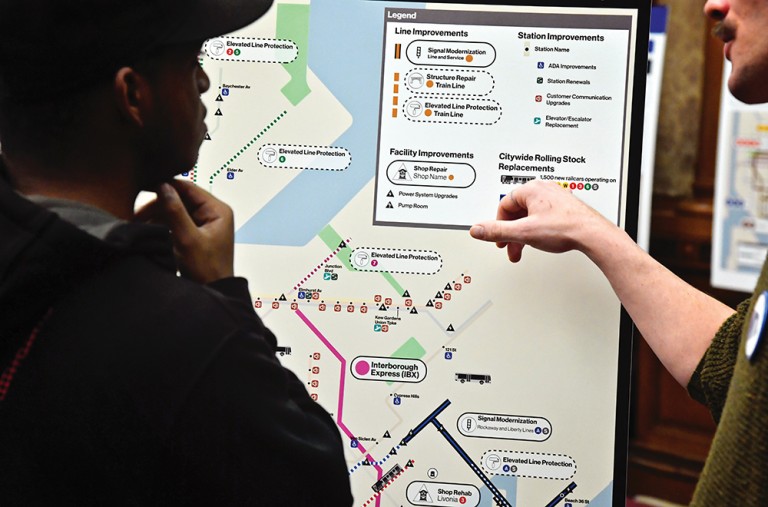By Michael V. Cusenza
The Metropolitan Transportation Authority’s proposed 2025-2029 Capital Plan is estimated to generate $106 billion in economic output and create 72,000 jobs on average over the five years across the Empire State, according to a new report by the Regional Plan Association, an independent, not-for-profit regional planning organization.
Additionally, by upgrading vital infrastructure, riders will experience fewer disruptions and delays, and will experience travel that is safer, more comfortable, and often faster than it is now, the report posited. For example, modernizing the signal system can save riders on modernized lines up to 12,000 cumulative hours each weekday, RPA officials said.
The Capital Plan is the largest proposal of repair investment in MTA history, with 90 percent of the $68 billion budget prioritized for system reconstruction and structural improvements. RPA’s analysis underscores the vast scale of ridership on the MTA transit system, with 37 percent of the region’s workers and 22 percent of all New York State workers being straphangers.
“The MTA’s network is vast, old, and at serious climate risk. Decades of underinvestment have left components of the system (much of which riders cannot see) in a state of disrepair. Every five years, the MTA submits a legally-required plan that outlines how it will make capital investments to maintain, rehabilitate, improve, and expand this system. To implement the plan, the MTA must secure federal and state support beyond its own fare and toll revenues, most of which go towards the operation of the system,” the RPA wrote. “At $68 billion, the MTA’s 2025-2029 Capital Plan sounds ambitious. However, as this report will argue, investments of this magnitude are needed to provide the service that New Yorkers need and expect. If fully implemented, the plan would not only repair and maintain the MTA’s vital infrastructure — subway, bus and train riders would experience daily travel that is more reliable, frequent, safe, comfortable, and accessible. And all New Yorkers will benefit from more economic opportunities, cleaner air, and a better quality of life.”
According to the authority, the MTA’s plan seeks to first address system components that directly impact rider experience by:
- Installing at least 75 miles of entirely new signal systems to replace old systems, many of which were installed in the 1930s
- Reconstructing or creating new substations in the subway and commuter rail systems that are most at-risk of power failure
- Purchasing of 1,500 new subway cars, 500 commuter rail cars and 2,500 new buses across the region
- Upgrading subway and commuter rail lines most impacted by major weather events
- Improving ADA-accessibility, enhancements of station safeguards to increase safety and overall advancing station functionality
“It’s no secret that New York’s transit system is the largest in the nation, supporting the most job-dense region in the U.S. Having a plan in place that addresses its most pressing problems that impact rider experience and economic output should be at the top of our region’s priorities,” said Rachel Weinberger, co-author of the report.
MTA Chairman and CEO Janno Lieber, still smarting from last month’s federal suspension of congestion pricing, added, “This report underscores what we’ve been saying all along – the aging $1.5 trillion transit system that keeps millions of New Yorkers moving and the regional economy humming must be preserved and upgraded. Starving the patient to death by underfunding is not an option.”

